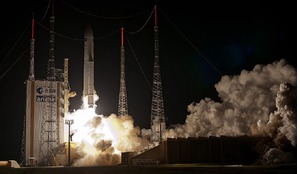When people begin to live on Mars it is inevitable that fledgling businesses will spring up at permanent habitats. While there are a growing number of plans to transport people to the Red Planet, and even set up the first colonies, much remains to be done on the practicalities of settlement. Added resources such as ground heat, water and increased atmospheric pressure can be instrumental. The Lake Matthew Team (LMT) has invented the Mars Terraformer Transfer (MATT) to fill that void. In this bold vision the LMT proposes using laser-deflection technology to redirect a small celestial body to a 2036 Mars impact. The plan to create an impact crater, called ‘Omaha Crater’, with lake, immense facilities and even summer plant life is innovative and not without risk. In this exclusive Special Report for ROOM two of those involved outline the idea and its ambitious goals, with a focus on the backbone of strategic and commercial opportunity.
This article introduces and outlines the MATT terraformation process and several core businesses that can put the terraformation resources to practical use. In doing so, it draws on analogies from frontier businesses of the First Transcontinental Railroad and the California Gold Rush in 19th-century America.
Terraformation resources can sustain and protect subaqueous natural-light habitation structures (‘habs’). Habs can be spacious, with practical scaling comparable to the largest terrestrial stadiums. This goal might seem unreasonable or impractical at first glance. However, the LMT has taken time to evaluate a suitable impactor and target site, and to detail reliable methods for a practical mission plan - practical in the programme-management sense of being attainable within reasonable constraints on time, money and resources. The mission plan completes a regional Mars terraformation in 2036, in good time to help pioneering crews.














